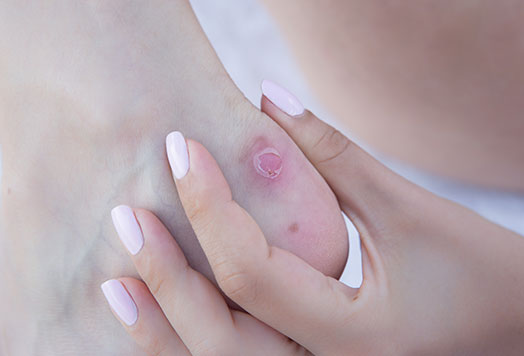What are the Ways to Get Rid of Corn on Your Feet?
Your body reacts to repeated rubbing or friction on the skin by trying to protect the deeper layers of soft tissue. At this point, corn can start to grow. Because of the regular movements and shoes worn on the feet, corns are a common foot condition. Their distinctive feature is a tiny, localised area of thicker skin, and they frequently form over bony prominences like the toes.

Conversely, calluses are larger than corns and have a more diffuse texture without a clear centre. Acquiring the correct diagnosis and suitable treatment can be facilitated by seeking guidance and comprehending these distinctions. Corns are generally a benign condition that can be treated safely and prevented with appropriate measures. But corn can cause problems for some people, so in some situations, it makes sense to get professional help. You can assess your needs at the foot clinic in Moorabbin and recommend the most effective treatment for corns on your feet.
Therapy for Corns on the Foot
You can improve the appearance of corn on your feet by using mild at-home treatments and techniques. It may help to see a podiatrist or physician if they are painful, swollen, or persistent. The professionals from the foot clinic near Beaumaris lessen the symptoms, offer comfort, and stop corn from happening again.
Even a small corn could turn into an ulcer, which could become an open wound that could become infected or difficult to heal, so it can be crucial to get treatment if you have diabetes or another health issue that affects poor blood circulation. Even if you use soft instruments to thin the skin, never attempt to treat corns on your own. Fixing the root cause is the first step in treatment. This can entail using tiny pressure-relieving pads and purchasing more suitable shoes and socks. To soften the corn on your feet, you can also soak them in warm, soapy water. Then, using a pumice stone or similar tool, gently exfoliate the skin. Also, avoid rubbing too vigorously or cutting the skin yourself, as this could lead to injury.
Here is some guidance for you:
- Giving guidance on medicated patches
- Utilising a tool, such as an emery board or pumice, to thin the impacted skin.
- Utilising a scalpel to cut off extra skin.
- Creating and prescribing personalised orthotics.
- Providing information and direction on prevention techniques and footwear.
If you find this post useful, share it with your loved ones!
Post Your Ad Here
Comments